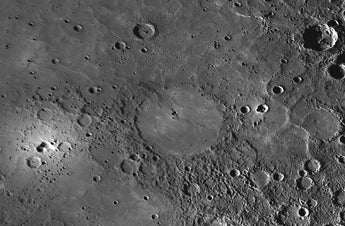New information about the planet Mercury released today gives astronomers insight into the hot planet’s composition and magnetic activity.
University of Central Florida post-doctoral researcher E. Todd Bradley is one of the scientists who published their findings in three articles appearing on Science magazine’s Web site.
The findings are based on data collected by the MESSENGER spacecraft’s final flyby of Mercury in September 2009.
The study revealed new information about magnetic substorms, the first observations of emission from an ionized species in Mercury’s exosphere, and evidence of younger volcanism than previously recognized on the planet.
Magnetic substorms occur regularly on earth. The space-weather disturbances last from one to three hours several times a day. Terrestrial substorms are accompanied by a range of phenomena, such as the majestic auroral displays seen in the Arctic and Antarctic skies. Substorms are also associated with hazardous energetic particle events that can wreak havoc on communications and Earth-observing satellites.
The study’s observations and analysis also should help scientists understand the evolution of the solar system’s innermost planet.
Ron Vervack, of Johns Hopkins University, was the lead researcher on the project.
